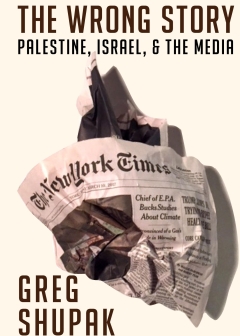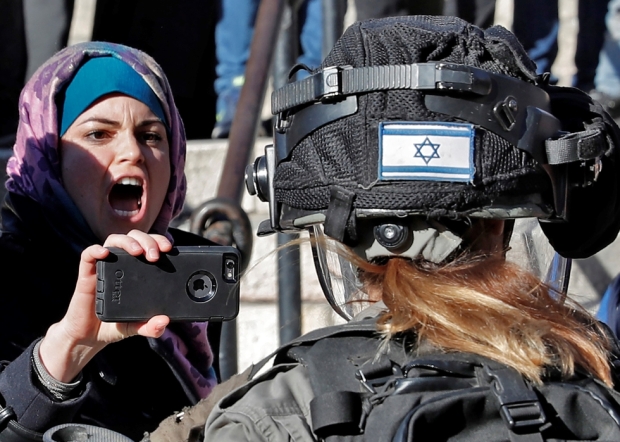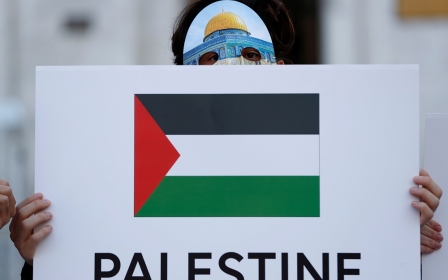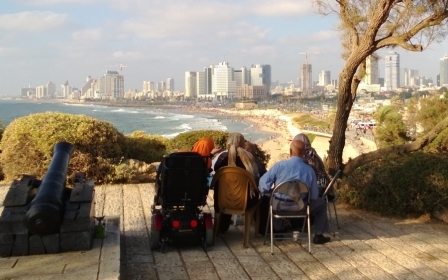Review: The Wrong Story: Palestine, Israel, and the Media

In 1988, his final year of service as New York Times Jerusalem bureau chief before being appointed diplomatic correspondent in Washington, Thomas Friedman gave an interview to the Israeli newspaper Yediot Ahronot, in which he proposed some symbolic concessions to the Palestinians in order to keep them in line.
The Palestinians must be given "something to lose", argued Friedman, because "I believe that as soon as Ahmed has a seat in the bus, he will limit his demands."
Orientalist contemptuousness
Writing shortly thereafter, Noam Chomsky wondered whether a prominent journalist might also be promoted to the post of chief diplomatic correspondent by "urg[ing] South Africans to 'give Sambo a seat in the bus', or propos[ing] that Jews be granted something to lose, because 'if you give Hymie a seat in the bus, he may limit his demands'".
Now, three decades later, Friedman remains regrettably institutionalised at the Times, despite having told the nation of Iraq to "suck on this". But even without his assistance, the US newspaper of record has exhibited enthusiastic dedication to traditions of Orientalist contemptuousness and other forms of bias.
In a new book titled The Wrong Story: Palestine, Israel, and the Media, Greg Shupak, a professor of media studies at the University of Guelph in Toronto, undertakes to document- and correct - the warped media narrative on Palestine-Israel.
Shupak focuses particularly on the New York Times' editorial coverage of Operation Protective Edge, Israel's summer 2014 assault on the Gaza Strip that, according to United Nations statistics, killed 2,251 Palestinians - the vast majority of them civilians and more than 550 of them children. Israel lost a handful of civilians, in addition to over 60 soldiers.
Debunking the myths
One mid-assault editorial highlighted by Shupak for its "dehumanis[ing]" and "infantilis[ing]" rhetoric sounds remarkably reminiscent of Friedman's bus seat proposal, in its suggestion that the Palestinians require some sort of "hope" as well as "responsible moderate leaders to point the way" if they are to be deterred from the temptations of terrorist extremism.
Israel, on the other hand, is never required to conform to any standard of moderation or human decency - even though Ahmed would presumably prefer a bus seat in which he can sit without being bombed to smithereens, tortured, bulldozed, or otherwise punished for the crime of existing.
Ahmed would presumably prefer a bus seat in which he can sit without being bombed to smithereens, tortured, bulldozed or otherwise punished for the crime of existing
The Wrong Story is divided into three sections, each one addressing a certain facet of media bias. The first debunks the myth that both sides, Palestinians and Israelis, are victimised by an intractable conflict for which they are both responsible.
As Shupak demonstrates, responsibility obviously lies with the party that invented its country on other people's land and went about conducting a vicious, decades-long campaign of ethnic cleansing of Palestinians. And yet as far as the media is concerned, historical context is irrelevant precisely because it legitimises Palestinian resistance.
Shupak writes that,"a day before [this] editorial was published, the UN reported that two Israeli civilians had died since Protective Edge began compared to a minimum of 578 Palestinian civilians, including 185 children".
Anyway, the media's time is clearly much better spent squawking about "barrages of rockets" fired into Israel - rockets that rarely inflict more than minimal damage - than contemplating why America's BFF is so committed to slaughtering civilians en masse and razing Arab infrastructure.
The second section of the book deals with the notion that the Palestine-Israel conflict is one between "extremists and moderates" on each side, which as Shupak notes permits the media to portray "violence against Palestinians as exceptional rather than a central characteristic of Israeli settler-colonialism".
The wrong story
Indeed, while violent acts by individual Israeli settlers and other crazies are condemned in the press, the Israeli military’s habit of bombing hospitals, schools, refugees sheltered at UN compounds, and so on apparently falls within the realm of civilised behaviour.
The third section of The Wrong Story looks at Israel's much-promoted "right to defend itself" - a right that naturally fails to extend to Palestinian victims of Israel's appallingly violent methods of "self-defence".
Shupak ably illustrates Israel's usefulness in complementing US bellicosity and furthering imperial designs in not only the Middle East but also the wider world
Israel's inalienable "right" - which is rather miraculous given that Israel is fundamentally to blame for the entire conflict in the first place - is no doubt facilitated by its special relationship with the US, the origins of which Shupak traces back to the anti-communist Eisenhower Doctrine of 1957.
As it turns out, President Eisenhower could have perhaps paid more attention to his own warning regarding the dangers posed by the military-industrial complex.
Shupak ably illustrates Israel's usefulness in complementing US bellicosity and furthering imperial designs in not only the Middle East but also the wider world, describing Israel as a "garrison for US-led imperialist capitalism" as well as a convenient venue "for the US to subsidise America's military industry" via gargantuan military aid and weapons deals.
After all, the "wrong story" is ingrained in non-editorial news reports, as well.
Set the record straight
The super-ambiguous-and-sanitised headline "Boys Drawn to Gaza Beach, and Into Centre of Mideast Strife" comes to mind - a certain Times recap of Israel's murder of four young Palestinian boys playing football on a beach during Operation Protective Edge.
Furthermore, straight news stories also exhibit the same addiction to truncated and manipulated timelines that Shupak addresses in his book - timelines according to which Israel is always and without a doubt "responding" to or "retaliating" against some or other Palestinian transgression (just as, for instance, the poor French were only ever "reacting" to Algerian aggression in Algerian territory that France had taken the liberty of colonising).
This is not to say, however, that Shupak brings up no examples beyond the aforementioned Times editorials. Of great blood pressure-escalating interest to me was a Protective Edge dispatch in The Independent by James Bloodworth, who declared himself "pretty bored" with the Palestine-Israel conflict - but unfortunately not bored enough that he couldn't come out in favour of an "Israeli incursion into Gaza that may be disproportionate".
After purporting to be vehemently opposed to "racism and bigotry", Bloodworth nonetheless found it appropriate to conclude his unhinged rant with the following warning about "Islamist anti-Semitism" to recalcitrant leftists: "Fascists can have brown faces too."
In the face of all of the trash that continues to pass for news and analysis of the Palestine-Israel conflict, Shupak deserves immense praise for working to set the record straight. And while two wrongs, as we know, will never make a right, The Wrong Story is nothing if not doubly right.
- Belen Fernandez is the author of The Imperial Messenger: Thomas Friedman at Work, published by Verso. She is a contributing editor at Jacobin magazine.
The views expressed in this article belong to the author and do not necessarily reflect the editorial policy of Middle East Eye.
Photo: Israeli police stand guard as Palestinians protests Israel's occupation, in Beit Al neighbourhood in Ramallah, West Bank on 11 November, 2015 (AA).
New MEE newsletter: Jerusalem Dispatch
Sign up to get the latest insights and analysis on Israel-Palestine, alongside Turkey Unpacked and other MEE newsletters
Middle East Eye delivers independent and unrivalled coverage and analysis of the Middle East, North Africa and beyond. To learn more about republishing this content and the associated fees, please fill out this form. More about MEE can be found here.








